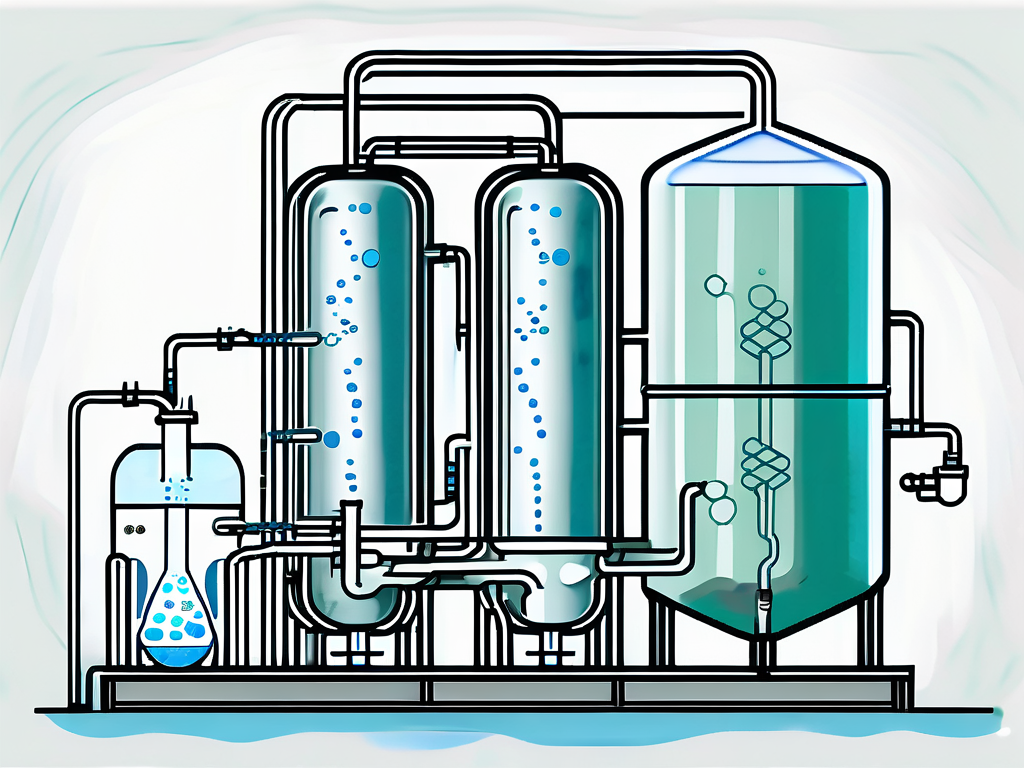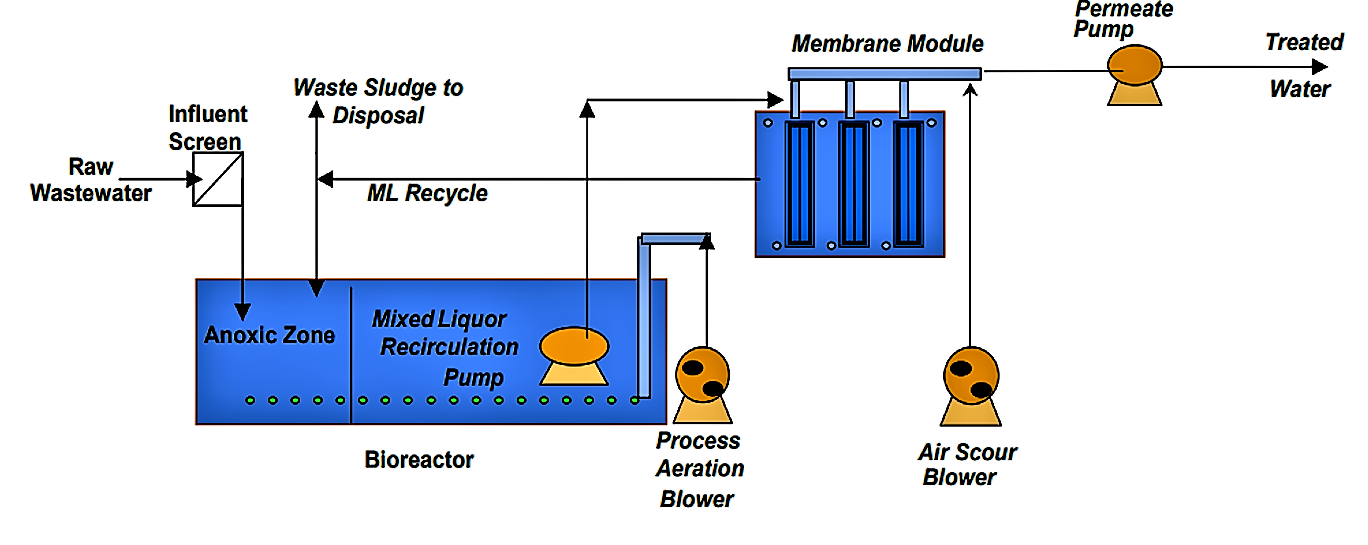Membrane Bioreactor vs. Traditional Treatment Methods: Key Differences Explained
Just How Membrane Bioreactors Are Revolutionizing Water Filtration Systems
The development of membrane bioreactors (MBRs) represents a significant development in the field of water purification, merging biological therapy processes with cutting-edge membrane layer purification modern technologies. As international water deficiency magnifies, the duty of MBRs in facilitating potable water reuse and sustainable water monitoring comes to be progressively essential.
Review of Membrane Layer Bioreactors
Membrane bioreactors (MBRs) represent a significant advancement in water filtration modern technology, as they incorporate biological treatment procedures with membrane filtering. This integration enhances the performance of wastewater treatment by utilizing microorganisms to weaken natural contaminants while at the same time employing semi-permeable membrane layers to separate treated water from put on hold solids and microorganisms.
The MBR system typically is composed of a biological activator where the microbial populace metabolizes contaminants, adhered to by a membrane layer filtration device that keeps biomass and allows just clean water to travel through. This double functionality leads to higher effluent top quality compared to standard treatment approaches. MBRs can be operated in both set and constant circulation modes, supplying versatility in design and application.
Furthermore, MBRs are characterized by their small impact, making them appropriate for city settings with room constraints. Membrane Bioreactor. They also allow the healing of water for reuse, thus adding to water sustainability efforts. While MBR modern technology has gained appeal in commercial and municipal applications, its operational intricacies and energy needs necessitate cautious factor to consider during implementation. Generally, MBRs go to the leading edge of enhancing water therapy efficiency and quality, showcasing the potential for innovative services in environmental management.
Benefits of MBR Innovation
The combination of organic treatment with membrane filtering provides numerous advantages for water purification processes. One of the main benefits of Membrane layer Bioreactor (MBR) technology is its capability to properly remove both not natural and organic pollutants, resulting in high-grade effluent. The membrane layers function as a physical obstacle, stopping suspended solids and pathogens from passing through, which boosts the total safety and integrity of cured water.
In addition, MBR systems need a smaller footprint contrasted to standard therapy techniques, enabling extra reliable room usage. This compact style is particularly useful in city settings where land is restricted. MBRs likewise show operational versatility, fitting varying influent qualities and circulation rates without considerable efficiency deterioration.
Furthermore, the procedure provides improved nutrient removal capacities, particularly for nitrogen and phosphorus, which are critical for preventing eutrophication in receiving waters. The decreased sludge production related to MBR technology also translates to reduce disposal costs, making it an economical remedy in the lengthy run - Membrane Bioreactor. Generally, the benefits of MBR modern technology placement it as a leading selection for ingenious and lasting water filtration systems, resolving both ecological and financial issues
Applications in Water Purification
Applications of Membrane Layer Bioreactor (MBR) modern technology in water filtration are varied and impactful, resolving various treatment needs across multiple markets. MBRs efficiently combine organic treatment processes with membrane filtering, making them perfect for community wastewater treatment, industrial effluent monitoring, and also potable water reuse efforts.
In local setups, MBRs are increasingly employed to enhance the top quality of dealt with wastewater, enabling compliance with stringent discharge policies and promoting the recycling of water for irrigation and non-potable usages. Their compact style likewise makes them appropriate for city settings where area is limited.
Industrially, MBR technology is used to deal with procedure water and wastewater, specifically in fields such as food and beverage, drugs, and fabrics. By properly eliminating impurities and put on hold solids, MBRs help sectors reduce ecological effects while recuperating beneficial resources from wastewater streams.
In Addition, MBRs are acquiring grip in decentralized water treatment applications, where small systems can be deployed in remote locations or developing areas. This adaptability allows neighborhoods to accomplish sustainable water monitoring options, boosting accessibility to tidy water while reducing dependence on typical therapy techniques.
Study and Success Stories

In one more example, a textile manufacturing facility in Bangladesh adopted MBR innovation to address its wastewater obstacles. The system lowered chemical oxygen need (COD) degrees from 1,200 mg/L to less than 100 mg/L, therefore satisfying regulative criteria and significantly reducing ecological influence.
The University of Cape Town's MBR setup has confirmed efficient in treating greywater for non-potable reuse on campus. This job not only saves potable water however also acts as an instructional model for lasting methods.
Additionally, a fish and shellfish handling plant in Norway used MBR technology to deal with effluents including high degrees of raw material, achieving over 90% pollutant removal. These instance research studies emphasize MBR modern technology's flexibility and its important duty in improving water high quality throughout varied applications.
Future of Water Therapy Solutions
As worldwide water scarcity and pollution obstacles intensify, ingenious water treatment services check this are coming this post to be significantly necessary to make sure lasting access to clean water. The future of water therapy depends on the assimilation of advanced innovations that enhance the effectiveness and performance of filtration processes. Membrane layer bioreactors (MBRs) go to the center of this advancement, integrating biological treatment with membrane purification to produce high-quality effluent ideal for numerous applications.

Emerging trends such as resource recuperation from wastewater, consisting of nutrients and power, will certainly further transform therapy centers into green centers. Advancements in nanotechnology and membrane layer products guarantee boosted performance and long life of purification systems.

Conclusion
Their role in potable water reuse and sustainable water management highlights their importance in addressing global water shortage difficulties. Continued research study and growth will certainly additionally enhance the efficiency and adoption of MBR innovation, making sure a resilient future for water treatment options.
The development of membrane layer bioreactors (MBRs) represents a substantial development in the field of water purification, combining organic treatment procedures with sophisticated membrane filtration modern technologies. As international water scarcity increases, the role of MBRs in facilitating potable water reuse and lasting water administration comes to be increasingly vital. They likewise allow the recovery of water for reuse, hence adding to water sustainability campaigns.As international water shortage and air pollution difficulties magnify, cutting-edge water treatment services are ending up being significantly important to ensure sustainable accessibility to clean water. Their function in safe and clean water reuse and sustainable water administration highlights their importance in dealing with worldwide water shortage challenges.